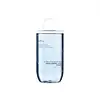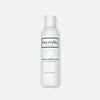What's inside
What's inside
 Key Ingredients
Key Ingredients

 Benefits
Benefits

 Concerns
Concerns

 Ingredients Side-by-side
Ingredients Side-by-side

Water
Skin ConditioningMethylpropanediol
Solvent1,2-Hexanediol
Skin ConditioningSea Water
HumectantGlycerin
HumectantBetaine
HumectantAllantoin
Skin ConditioningButylene Glycol
HumectantCaprylyl Glycol
EmollientEthylhexylglycerin
Skin ConditioningPanthenol
Skin ConditioningXanthan Gum
EmulsifyingMalachite Extract
AntioxidantDisodium EDTA
Hydrolyzed Hyaluronic Acid
HumectantPentylene Glycol
Skin ConditioningXylitylglucoside
HumectantAnhydroxylitol
HumectantSodium Hyaluronate
HumectantXylitol
HumectantPotassium Hyaluronate
Skin ConditioningGlucose
HumectantHydrolyzed Sodium Hyaluronate
Skin ConditioningSodium Acetylated Hyaluronate
HumectantHydroxypropyltrimonium Hyaluronate
Sodium Hyaluronate Crosspolymer
HumectantDimethylsilanol Hyaluronate
HumectantHydrolyzed Calcium Hyaluronate
Skin ConditioningHyaluronic Acid
HumectantSodium Sulfated Hyaluronate
EmollientHamamelis Virginiana Extract
AntiseborrhoeicChamaecyparis Obtusa Leaf Extract
Skin ConditioningSodium Stearoyl Hyaluronate
Skin ConditioningSodium Oleoyl Hyaluronate
Skin ConditioningWater, Methylpropanediol, 1,2-Hexanediol, Sea Water, Glycerin, Betaine, Allantoin, Butylene Glycol, Caprylyl Glycol, Ethylhexylglycerin, Panthenol, Xanthan Gum, Malachite Extract, Disodium EDTA, Hydrolyzed Hyaluronic Acid, Pentylene Glycol, Xylitylglucoside, Anhydroxylitol, Sodium Hyaluronate, Xylitol, Potassium Hyaluronate, Glucose, Hydrolyzed Sodium Hyaluronate, Sodium Acetylated Hyaluronate, Hydroxypropyltrimonium Hyaluronate, Sodium Hyaluronate Crosspolymer, Dimethylsilanol Hyaluronate, Hydrolyzed Calcium Hyaluronate, Hyaluronic Acid, Sodium Sulfated Hyaluronate, Hamamelis Virginiana Extract, Chamaecyparis Obtusa Leaf Extract, Sodium Stearoyl Hyaluronate, Sodium Oleoyl Hyaluronate
Hamamelis Virginiana Water
AstringentWater
Skin ConditioningAlcohol
AntimicrobialGlycerin
HumectantPolysorbate 20
EmulsifyingLeuconostoc/Radish Root Ferment Filtrate
AntimicrobialSodium Lactate
BufferingSodium PCA
HumectantSodium Gluconate
Skin ConditioningO-Cymen-5-Ol
AntimicrobialSorbitol
HumectantProline
Skin ConditioningFructooligosaccharides
HumectantGlucosamine Hcl
Gluconolactone
Skin ConditioningSodium Hyaluronate
HumectantSodium Benzoate
MaskingPhenethyl Alcohol
MaskingCaprylyl Glycol
EmollientPotassium Sorbate
PreservativeHamamelis Virginiana Water, Water, Alcohol, Glycerin, Polysorbate 20, Leuconostoc/Radish Root Ferment Filtrate, Sodium Lactate, Sodium PCA, Sodium Gluconate, O-Cymen-5-Ol, Sorbitol, Proline, Fructooligosaccharides, Glucosamine Hcl, Gluconolactone, Sodium Hyaluronate, Sodium Benzoate, Phenethyl Alcohol, Caprylyl Glycol, Potassium Sorbate
 Reviews
Reviews

Ingredients Explained
These ingredients are found in both products.
Ingredients higher up in an ingredient list are typically present in a larger amount.
Caprylyl Glycol is a humectant and emollient, meaning it attracts and preserves moisture.
It is a common ingredient in many products, especially those designed to hydrate skin. The primary benefits are retaining moisture, skin softening, and promoting a healthy skin barrier.
Though Caprylyl Glycol is an alcohol derived from fatty acids, it is not the kind that can dry out skin.
This ingredient is also used as a preservative to extend the life of products. It has slight antimicrobial properties.
Learn more about Caprylyl GlycolGlycerin is already naturally found in your skin. It helps moisturize and protect your skin.
A study from 2016 found glycerin to be more effective as a humectant than AHAs and hyaluronic acid.
As a humectant, it helps the skin stay hydrated by pulling moisture to your skin. The low molecular weight of glycerin allows it to pull moisture into the deeper layers of your skin.
Hydrated skin improves your skin barrier; Your skin barrier helps protect against irritants and bacteria.
Glycerin has also been found to have antimicrobial and antiviral properties. Due to these properties, glycerin is often used in wound and burn treatments.
In cosmetics, glycerin is usually derived from plants such as soybean or palm. However, it can also be sourced from animals, such as tallow or animal fat.
This ingredient is organic, colorless, odorless, and non-toxic.
Glycerin is the name for this ingredient in American English. British English uses Glycerol/Glycerine.
Learn more about GlycerinSodium Hyaluronate is hyaluronic acid's salt form. It is commonly derived from the sodium salt of hyaluronic acid.
Like hyaluronic acid, it is great at holding water and acts as a humectant. This makes it a great skin hydrating ingredient.
Sodium Hyaluronate is naturally occurring in our bodies and is mostly found in eye fluid and joints.
These are some other common types of Hyaluronic Acid:
Learn more about Sodium HyaluronateWater. It's the most common cosmetic ingredient of all. You'll usually see it at the top of ingredient lists, meaning that it makes up the largest part of the product.
So why is it so popular? Water most often acts as a solvent - this means that it helps dissolve other ingredients into the formulation.
You'll also recognize water as that liquid we all need to stay alive. If you see this, drink a glass of water. Stay hydrated!
Learn more about Water